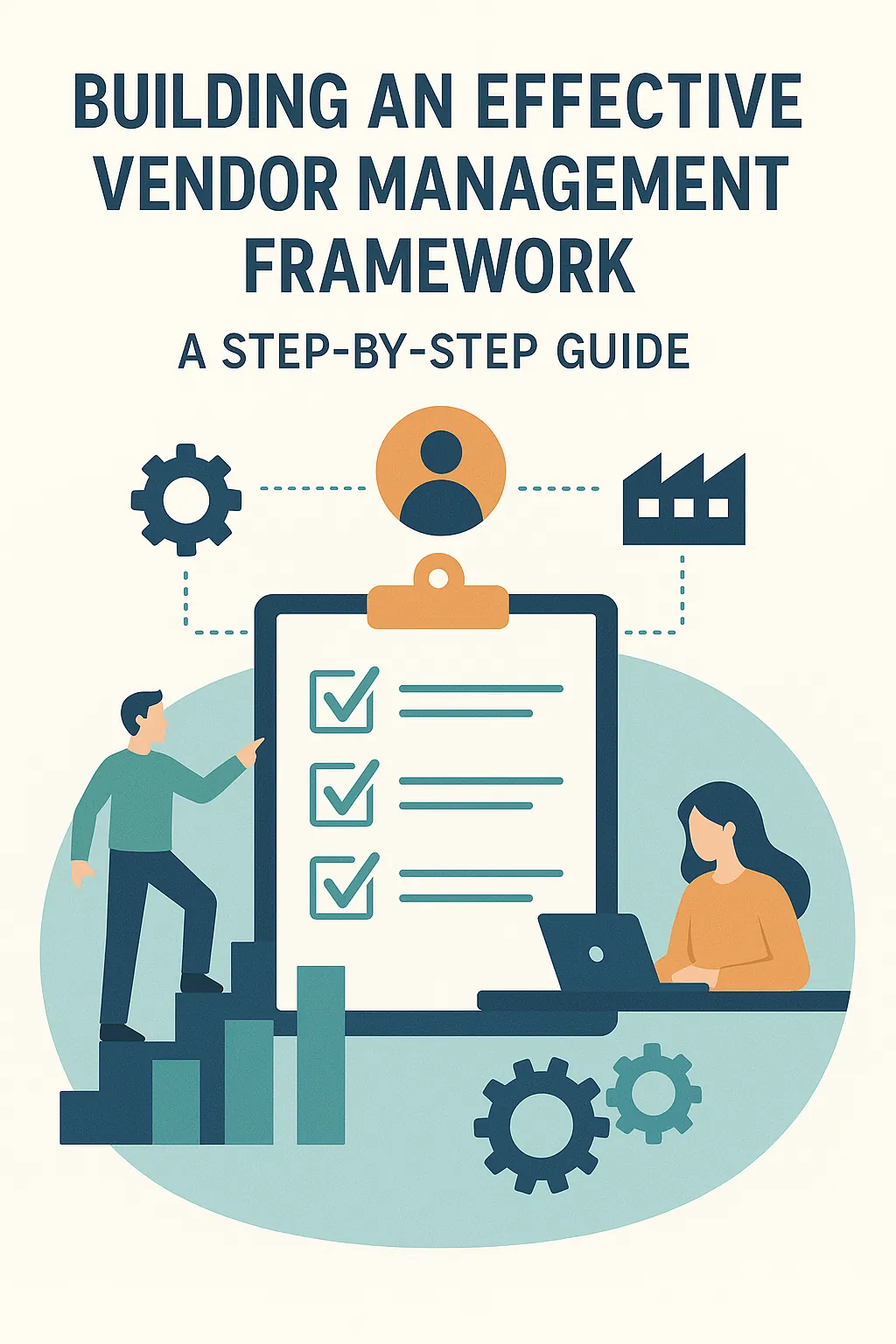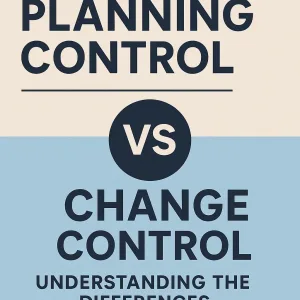Introduction
The ability to effectively manage external vendors is crucial for the success of any project. Vendor management refers to the processes and practices involved in overseeing relationships with external suppliers who provide goods and services. This management is significant as it directly impacts project outcomes, including cost efficiency, quality assurance, and risk mitigation. By establishing a robust vendor management framework, project managers can ensure that their projects run smoothly and that they receive the best value from their vendors.
However, project managers often face several challenges when it comes to managing vendors. These challenges can include:
- Communication Barriers: Ensuring clear and consistent communication between project teams and vendors can be difficult, leading to misunderstandings and misaligned expectations.
- Quality Control: Maintaining the quality of deliverables from vendors can be a challenge, especially when multiple vendors are involved in a project.
- Risk Management: Identifying and mitigating risks associated with vendor performance is essential, yet often overlooked in the rush to meet project deadlines.
- Cost Management: Balancing the budget while ensuring that vendors deliver on their commitments can be a complex task, particularly in dynamic project environments.
To address these challenges, the concept of a vendor management framework comes into play. This framework serves as a structured approach to managing vendor relationships throughout the project lifecycle. It encompasses various stages, from vendor selection to contract management and performance evaluation. The benefits of implementing a vendor management framework include:
- Strengthened Vendor Relationships: A well-structured framework fosters better communication and collaboration between project teams and vendors, leading to stronger partnerships.
- Optimized Performance: By establishing clear expectations and performance metrics, project managers can ensure that vendors meet their obligations and contribute positively to project goals.
- Risk Mitigation: A comprehensive framework allows for proactive identification and management of potential risks associated with vendor performance, enhancing overall project stability.
- Cost Efficiency: Effective vendor management can lead to cost savings by optimizing vendor selection and negotiation processes, ensuring that project budgets are adhered to.
Understanding the Vendor Management Framework
A vendor management framework serves as a structured approach to managing relationships with suppliers and service providers. It encompasses the strategies, policies, and processes that guide vendor governance, ensuring that vendors meet the organization’s standards for quality, security, compliance, and performance. This framework is essential for fostering strong partnerships and achieving project success.
Definition of a Vendor Management Framework
A vendor management framework is a comprehensive system designed to assess, select, and manage suppliers effectively. It includes a set of processes, tools, and criteria for evaluating supplier performance and determining their suitability for the organization. By establishing a clear framework, project managers can ensure that all aspects of vendor management are addressed systematically, leading to improved project outcomes and reduced risks associated with vendor relationships [3][6].
Key Components of an Effective Framework
An effective vendor management framework consists of several critical components:
- Selection: This initial stage involves assessing the supplier needs for the project and setting objectives related to cost, delivery schedules, and reliability. Project managers must collect information on potential suppliers to choose the best fit for their organization [7].
- Onboarding: Once a vendor is selected, the onboarding process begins. This includes integrating the vendor into the project team, providing necessary training, and ensuring that all stakeholders understand the vendor management strategy and their roles within it [8].
- Performance Management: Continuous monitoring of vendor performance is crucial. This component involves setting performance metrics, conducting regular evaluations, and providing feedback to ensure that vendors meet the established standards [11].
- Relationship Management: Building and maintaining strong relationships with vendors is vital for long-term success. Effective communication and collaboration can lead to better problem-solving and innovation, ultimately enhancing project outcomes [5][10].
Streamlining Communication and Improving Project Outcomes
A well-structured vendor management framework can significantly streamline communication between project teams and vendors. By establishing clear procedures and workflows, project managers can facilitate open lines of communication, which is essential for addressing issues promptly and collaboratively. This proactive approach not only helps in mitigating risks but also fosters a culture of transparency and trust [1][4].
Moreover, by implementing a vendor management framework, project managers can enhance project outcomes through:
- Increased Efficiency: A structured approach allows for better planning and execution, leading to more efficient project management processes [2].
- Continuous Improvement: The framework promotes ongoing assessment and refinement of vendor relationships, ensuring that both parties can adapt and improve over time [2][15].
Step 1: Identifying Vendor Needs
Establishing a robust vendor management framework begins with a thorough understanding of your project’s specific requirements for external support. This initial step is crucial as it sets the foundation for effective vendor selection and management throughout the project lifecycle. Here’s how project managers can effectively identify vendor needs:
- Analyze Project Scope and Objectives: Start by clearly defining the scope of your project. This involves outlining the project’s goals, deliverables, and timelines. By understanding what the project aims to achieve, project managers can pinpoint the specific areas where vendor support is necessary. For instance, if the project requires specialized skills or resources that the internal team lacks, this will highlight the need for external vendors [2][4].
- Assess the Types of Vendors Needed: Different projects may require various types of vendors, such as contractors for construction, consultants for strategic advice, or suppliers for materials. It is essential to categorize the types of vendors that align with the project’s objectives. This assessment should consider the nature of the work, the expertise required, and the expected deliverables from each vendor type [5][12].
- Establish Criteria for Vendor Selection: Once the vendor needs are identified, project managers should develop clear criteria for selecting vendors. This includes evaluating potential vendors based on their experience, financial stability, quality standards, and compliance with industry regulations. Establishing these criteria not only streamlines the selection process but also ensures that the chosen vendors can meet the project’s specific requirements effectively [1][14].
By following these steps, project managers can create a solid foundation for their vendor management framework, ensuring that they select the right partners to support their project goals. This proactive approach not only enhances project efficiency but also fosters collaboration and innovation throughout the project lifecycle.
Step 2: Vendor Selection Process
Establishing a robust vendor management framework is crucial for project managers aiming to align vendor capabilities with project goals. The vendor selection process is a pivotal step in this framework, ensuring that the chosen vendors can meet the specific needs of the project. Here’s a comprehensive guide to navigating this process effectively.
Develop a Vendor Selection Criteria Checklist
Creating a vendor selection criteria checklist is essential for systematically evaluating potential vendors. This checklist should include:
- Quality of Products/Services: Assess the quality standards of the vendor’s offerings to ensure they meet project requirements.
- Cost: Evaluate pricing structures to ensure they align with the project budget while providing value.
- Experience and Expertise: Consider the vendor’s experience in the industry and their expertise relevant to the project.
- Reliability and Reputation: Research the vendor’s track record, including customer reviews and case studies, to gauge their reliability.
- Compliance and Certifications: Ensure that the vendor meets necessary regulatory requirements and holds relevant certifications.
- Support and Communication: Evaluate the vendor’s customer support capabilities and communication style to ensure effective collaboration.
This checklist serves as a foundational tool for project managers to maintain objectivity and consistency during the selection process [1].
Discuss Methods for Sourcing Potential Vendors
Sourcing potential vendors can be approached through various methods, each with its advantages:
- Request for Proposals (RFPs): This formal process invites vendors to submit proposals detailing how they can meet project needs. RFPs allow project managers to compare multiple vendors based on their offerings and pricing.
- Referrals: Leveraging referrals from industry peers or previous project experiences can lead to trustworthy vendor recommendations. This method often results in finding vendors with proven reliability and quality.
- Online Marketplaces and Directories: Utilizing online platforms that list vendors can help project managers discover new suppliers. These platforms often provide reviews and ratings, aiding in the initial assessment.
- Networking Events and Trade Shows: Attending industry events can facilitate direct interactions with potential vendors, allowing project managers to assess their capabilities firsthand.
By employing a combination of these sourcing methods, project managers can create a diverse pool of potential vendors to evaluate [2].
Explain the Evaluation Process, Including Scoring and Interviews
Once potential vendors have been sourced, the evaluation process begins. This process typically involves:
- Scoring System: Implement a scoring system based on the vendor selection criteria checklist. Each vendor can be rated on a scale (e.g., 1 to 5) for each criterion, allowing for a quantitative comparison.
- Interviews: Conduct interviews with shortlisted vendors to gain deeper insights into their capabilities and approach. This interaction can reveal the vendor’s understanding of the project and their willingness to collaborate.
- Reference Checks: Contact references provided by the vendor to validate their claims and gather feedback on their performance in previous projects.
- Final Assessment: Compile scores and feedback from interviews and references to make an informed decision. The vendor with the highest score and best fit for the project should be selected.
This structured evaluation process not only aids in selecting the right vendor but also fosters transparency and accountability in decision-making [3][4].
By following these steps, project managers can establish a vendor selection process that aligns with their project goals, ultimately leading to successful vendor partnerships and project outcomes.
Step 3: Onboarding Vendors
Onboarding vendors is a critical phase in the vendor management framework, particularly for project managers who need to ensure that external partners are seamlessly integrated into the project team. This step not only involves administrative tasks but also sets the tone for a successful working relationship. Below are the key components to consider during the onboarding process.
1. Outline the Onboarding Process
The onboarding process typically consists of several structured steps to ensure that vendors are adequately prepared to contribute to the project. These steps include:
- Documentation Collection: Gather all necessary legal, financial, and compliance documentation from the vendor. This may include contracts, insurance certificates, and tax forms to verify that the vendor meets your organization’s standards and regulatory requirements [2][12].
- Verification and Compliance Checks: Conduct thorough checks to ensure that the vendor complies with your organization’s policies and industry regulations. This step is crucial for mitigating risks associated with vendor relationships [1][12].
- Setting Up Vendor Accounts: Create vendor accounts in your project management systems, ensuring that they have access to the necessary tools and resources to perform their tasks effectively [2][11].
2. Importance of Clear Communication and Setting Expectations
Effective communication is vital during the onboarding phase. Project managers should focus on:
- Aligning Goals: Clearly articulate the project objectives and how the vendor’s role fits into the larger picture. This alignment helps in fostering a collaborative environment [9][15].
- Establishing Communication Channels: Define how and when communication will occur. Regular check-ins and updates can help in addressing any issues promptly and maintaining a strong working relationship [9].
- Setting Expectations: Clearly outline the expectations regarding deliverables, timelines, and quality standards. This clarity helps prevent misunderstandings and ensures that both parties are on the same page [9][15].
3. Tips for Training Vendors on Project Tools and Processes
To ensure that vendors can effectively contribute to the project, it is essential to provide them with the necessary training on your organization’s tools and processes:
- Conduct Training Sessions: Organize training sessions to familiarize vendors with project management tools, software, and any specific processes they need to follow. This can include tutorials on using project management platforms or communication tools [4][10].
- Provide Documentation: Create and share comprehensive guides or manuals that outline the tools and processes. This documentation serves as a reference for vendors as they navigate their responsibilities [4][10].
- Encourage Feedback: Foster an environment where vendors feel comfortable providing feedback on the onboarding process and training materials. This feedback can help improve future onboarding efforts and enhance vendor integration [4][15].
By following these steps, project managers can effectively onboard vendors, ensuring they are well-prepared to contribute to the project’s success. A structured onboarding process not only enhances compliance and productivity but also builds a foundation for a strong partnership between the project team and the vendor.
Step 4: Performance Management
Establishing a robust performance management system is crucial for effectively managing vendor relationships within project management. This step focuses on creating mechanisms to monitor and assess vendor performance, ensuring that they meet the expectations set forth in the vendor management framework. Here are the key points to consider:
Define Key Performance Indicators (KPIs) for Vendor Evaluation
- Establish Clear Metrics: Begin by defining specific KPIs that align with your project goals and vendor expectations. These indicators should measure various aspects of vendor performance, such as delivery timelines, quality of goods or services, cost management, and responsiveness to issues. By having clear metrics, project managers can objectively evaluate vendor performance and ensure alignment with project objectives [6][8].
- Tailor KPIs to Project Needs: Different projects may require different KPIs. For instance, a project focused on software development might prioritize metrics related to code quality and bug resolution times, while a construction project might focus on safety records and adherence to timelines. Customizing KPIs to fit the specific context of the project enhances their relevance and effectiveness [7][9].
Importance of Regular Performance Reviews and Feedback Sessions
- Continuous Improvement: Regular performance reviews are essential for fostering a culture of continuous improvement. These sessions provide an opportunity to discuss performance against the established KPIs, identify areas for improvement, and recognize achievements. This ongoing dialogue helps maintain strong vendor relationships and encourages vendors to strive for higher performance levels [4][11].
- Feedback Mechanism: Implementing structured feedback sessions allows project managers to communicate expectations clearly and address any concerns promptly. This proactive approach not only helps in resolving issues before they escalate but also reinforces the importance of accountability and transparency in vendor relationships [5][7].
Use of Performance Data to Inform Decision-Making and Improvements
- Data-Driven Insights: Utilizing performance data collected through KPIs and reviews enables project managers to make informed decisions regarding vendor management. Analyzing this data can reveal trends, highlight strengths and weaknesses, and inform strategic adjustments to vendor relationships or project plans [8][11].
- Actionable Recommendations: Performance data should not only be used for evaluation but also to develop actionable recommendations for improvement. For example, if a vendor consistently underperforms in a specific area, project managers can work collaboratively with the vendor to create a targeted improvement plan, ensuring that both parties are aligned in their goals [9][10].
Step 5: Relationship Management
Establishing a robust vendor management framework is crucial, and one of the most significant components of this framework is relationship management. Strong vendor relationships not only enhance operational efficiency but also contribute to the overall success of projects. Here are key strategies and insights for fostering effective vendor relationships:
Strategies for Fostering Open Communication and Collaboration
- Regular Check-Ins: Schedule consistent meetings to discuss project progress, address concerns, and share updates. This practice ensures that both parties are aligned and can proactively tackle any issues that arise [4][10].
- Clear Expectations: Establishing clear expectations from the outset is vital. This includes defining roles, responsibilities, and performance metrics. Regularly revisiting these expectations can help maintain focus and accountability [3][11].
- Feedback Mechanisms: Implement structured feedback processes where both project teams and vendors can share insights and suggestions. This two-way communication fosters a culture of collaboration and continuous improvement [12][14].
Conflict Resolution Techniques
- Proactive Problem-Solving: Anticipate potential conflicts by identifying areas of risk early in the project. Develop tailored risk mitigation strategies that can be activated if issues arise [7][14].
- Open Dialogue: When disputes occur, encourage open dialogue to understand the perspectives of all parties involved. This approach can lead to more amicable resolutions and strengthen the partnership [5][13].
- Negotiation Skills: Equip project managers with effective negotiation techniques to address conflicts. This includes understanding the needs of the vendor and finding mutually beneficial solutions that uphold the project’s integrity [13][15].
Importance of Ongoing Relationship Building for Long-Term Success
- Trust and Reliability: Building trust is essential for long-term vendor relationships. Consistent communication and transparency in dealings can foster a sense of reliability, making vendors more willing to go the extra mile for your projects [11][12].
- Adaptability: In a dynamic project environment, being adaptable is key. Strong relationships allow for flexibility in negotiations and adjustments to project scopes, which can lead to innovative solutions and improved outcomes [14][15].
- Mutual Growth: Investing in vendor relationships can lead to shared growth opportunities. By collaborating closely, both parties can identify new avenues for innovation and efficiency, ultimately benefiting the project and the organization as a whole [10][12].
Step 6: Continuous Improvement
Establishing a vendor management framework is not a one-time task but an ongoing process that requires continuous refinement. This step is crucial for project managers and team leads who aim to enhance their vendor relationships and optimize project outcomes. Here are key points to consider for fostering continuous improvement in your vendor management practices:
Importance of Gathering Feedback
- Vendor and Team Insights: Regularly soliciting feedback from both vendors and project teams is essential. This feedback can provide valuable insights into the effectiveness of current practices, highlight areas for improvement, and identify any challenges faced during collaboration. Engaging vendors in discussions about their experiences can lead to stronger partnerships and better alignment with project goals [1].
- Proactive Communication: Establishing a culture of open communication encourages vendors to share their perspectives. This proactive approach not only helps in identifying issues early but also fosters a collaborative environment where both parties can work together to find solutions [1].
Methods for Reviewing and Updating the Framework
- Regular Assessments: Implement a schedule for periodic reviews of the vendor management framework. This could involve evaluating vendor performance against established KPIs, assessing compliance with regulatory requirements, and analyzing the overall effectiveness of vendor relationships [2][9].
- Adaptation to Feedback: Use the feedback gathered to make informed adjustments to the framework. This could include refining selection criteria, updating governance structures, or enhancing training programs for team members involved in vendor management [6][7].
- Incorporating Technology: Leverage technology and data analytics to monitor vendor performance and project outcomes. Tools that facilitate real-time tracking and reporting can help project managers make data-driven decisions and quickly adapt to changing circumstances [5][10].
Benefits of Adapting to Changing Needs
- Flexibility in Project Management: The project landscape is dynamic, and vendor needs may evolve over time. By continuously improving the vendor management framework, project managers can ensure that it remains relevant and effective in meeting the demands of current projects [3][4].
- Enhanced Risk Management: A robust framework that adapts to changes can significantly mitigate risks associated with vendor relationships. By staying attuned to the vendor landscape and project requirements, project managers can proactively address potential issues before they escalate [9][14].
- Driving Innovation: Continuous improvement encourages innovation within vendor relationships. By fostering an environment where vendors feel valued and heard, project managers can inspire creative solutions and collaborative efforts that enhance project outcomes [8][10].
Conclusion
Establishing a robust vendor management framework is not just beneficial; it is essential for ensuring project success. A well-structured framework allows project managers to effectively manage vendor relationships, streamline processes, and mitigate risks associated with external suppliers. By fostering strong communication and collaboration with vendors, project managers can enhance the overall performance of their projects and achieve organizational goals more efficiently [1][10].
As you consider the steps outlined in this guide, it is crucial to take action. Begin by assessing your current vendor management practices and identifying areas for improvement. Implementing a comprehensive vendor management framework will not only reduce your internal workload but also strengthen vendor relationships, ultimately leading to increased productivity and business growth [2][12].
To further support your journey in vendor management, consider exploring additional resources that delve deeper into best practices, tools, and strategies. These resources can provide valuable insights and help you stay updated on the latest trends in vendor management, ensuring that you are well-equipped to navigate the complexities of managing external suppliers [4][14].
By prioritizing the establishment of an effective vendor management framework, you position your projects for success and create a foundation for sustainable growth within your organization. Embrace the opportunity to enhance your vendor management practices today!
Find out more about Shaun Stoltz https://www.shaunstoltz.com/about/.
This post was written by an AI and reviewed/edited by a human.



